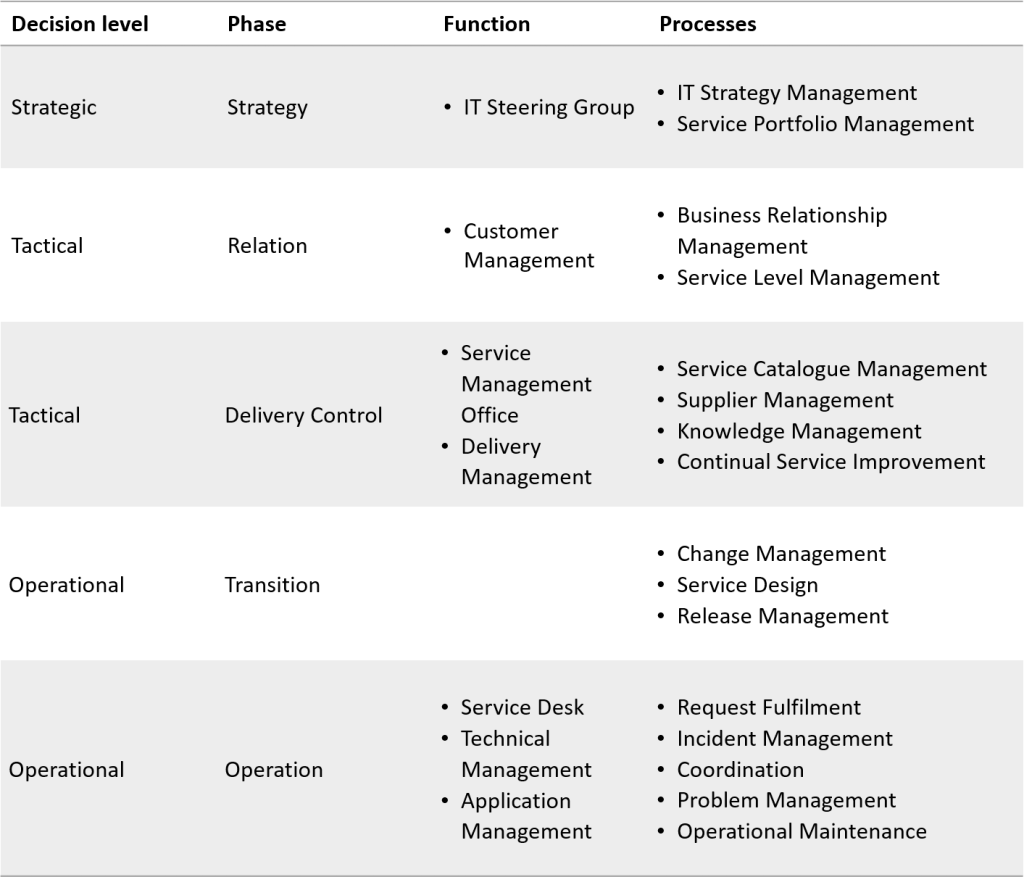Every employee, every activity and every decision within an IT organization is a part of the delivery of IT services to the business. In the world of team sports, what differentiates success from failure is often not how skilled the individuals are, but how well they succeed in playing together as a team. In the same way, to be really effective as an IT organization, it is crucial that all departments learn to play together.
The aim of TRIM is to describe a model which can be used as a reference for an IT organization which wants to take the step required in order to become a team. To ensure clarity, the model is based on a number of different sections which together form the whole that is required.
The IT services’ life-cycle phases are divided into the governance model’s decision levels: strategic, tactical and operational. This is in order to provide a simple indication of the level at which activities and decisions are normally managed within the respective phase.
Each phase then has a defined purpose which has to be fulfilled. The responsibility for fulfilling the aim lies with one or several functions, each of which contain the roles required to perform the activities. A number of functions are thus defined which are both a part of the governance model, and also have a responsibility delivering the IT services. The simplicity then lies in the fact that staff within the IT organization do not need to think about whether their issue is a governance issue or a delivery issue as both are managed by the same function.
For activities to be subsequently measured and improved, the model defines a number of processes in each phase. However, the responsibility that activities are performed still lies with the functions, the process only exists in order to guide and facilitate the work.
The model describes a whole in which each part is needed. If any of these parts are missing, in the worst case, the IT organization can be unclear about who is responsible for what, issues can fall between two stools and the processes that are introduced are sluggish and administrative.
The table below shows the relationship between all parts included, with decision levels, phases, functions and processes.


